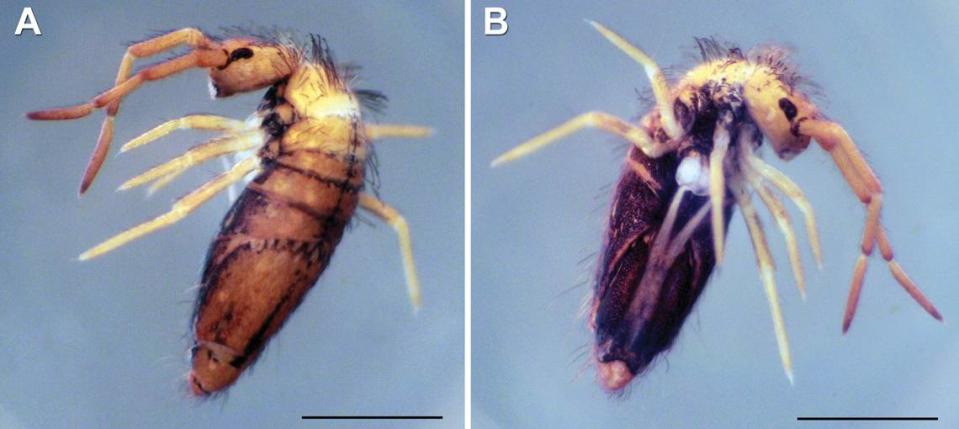Sixteen-eyed creature — with orange-yellow body — found in grassland. See new species
A tiny creature scurried on its six legs through a dry grassland in Hungary. Suddenly, a monstrous machine appeared above him — and he was sucked into the depths of a researcher’s vacuum.
Scientists were looking for collembola in dry, sandy steppes of Fülöpháza, according to a study published Dec. 5 in the journal ZooKeys. While sorting through the specimens collected in their vacuum sampler, scientists spotted a small orange-yellow creature.
The critter turned out to be a new species of slender springtail: Entomobrya arenaria, researchers said in the study. Eight specimens of the new species, one female and seven males, were collected.
Entomobrya arenaria have an “orange-yellow” body with a “think dark” line bisecting their backside, according to scientists. Their back also has “dark transverse stripes.”
Researchers said the front side of the springtail’s body is “entirely dark in adults,” similar to other species of Entomobrya. Juveniles and subadult specimens have a “pale yellow” body and the line on their backs is smaller and purple. Unlike adults, their front sides are not darkly pigmented.
Photos show the variances between adult and subadult specimens of the new species.


The 16-eyed creatures have black antennae with black spots between the bases of antennae, the study said. Each antennae has increasingly intense “dark violet pigment” from their base to tip.
The springtails are small, measuring approximately 0.1 inches, not including their antennae, according to scientists. Their antennae were approximately 0.05 inches long, bringing their total length to about 0.2 inches.
Researchers said the creatures were found in the Pannonic sand steppes, “where vegetation is a partly opened grass.” The region is an “extremely xerophilic” habitat — meaning the new species can likely withstand dry conditions with little moisture.
The new species was named after its habitat, where it is “one of the most dominant” collembola species, according to experts.
Fülöpháza is about 50 miles southeast of Budapest.
Six-eyed creature — with long blue body — found on dead wood in forest. See new species
Sparring aquarium creature turns out to be a new ‘miniature’ species. See the fish
‘Large’ sea creature breathes with its legs, sucks prey with ‘straw.’ See new species

 Yahoo Finance
Yahoo Finance 